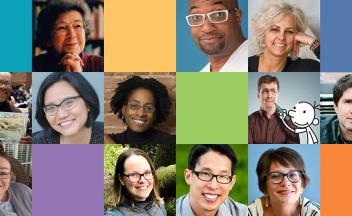Think about which type of study best fits into your curriculum and what you hope your students will gain from the unit. A “multiple response”approach includes research about an author’s life, a look at the author’s books as literature, and students’ reflection on how they personally respond to the author’s books.
In The Allure of Authors: Author Studies in the Elementary Classroom, author Carol Brennan Jenkins argues there are three main types of author studies. The first type focuses on an author study as a “literary biography,” in which students make connections between the author’s life and work. The second type of author study is based on the reader’s “critical response” to the books, focusing on an author’s themes, characters and writing, with little or no attention to the author’s life. The third type of author study, meanwhile, is based on the reader’s own response to the books of a particular author, focusing on books can help readers relive and reflect on events in their own lives.
While each of these types of author studies has its own merits, Jenkins urges teachers to consider pulling strands of all three types into their author studies, viewing an author study as a “multiple response.” In a multiple-response author study, students look at an author’s books as literature while also doing research about the author’s life. Finally, they reflect on how they personally respond to the author’s books.
Think about which type of study appeals to you and fits into your curriculum needs. You should also consider what you hope your students gain from the unit.Do you want to introduce the students to new authors, or develop their research or writing skills? What will the student projects be? Visit our Culminating Projects section for ideas. Answering these questions and exploring this section of our website will help you design an author study unit that’s just right for your class.
